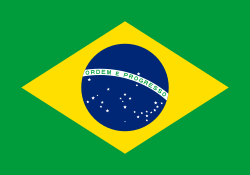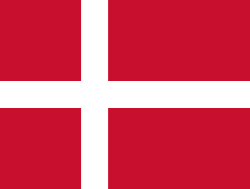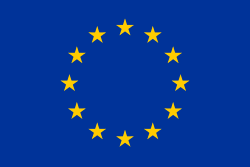Australiens Grand Prix 1998
| Datum | 8 mars 1998 |
|---|---|
| Bana | Albert Park Circuit |
| Sträcka | 58 × 5,303 = 307,574 km |
| Vinnare | Mika Häkkinen, McLaren-Mercedes |
| Pole position | Mika Häkkinen, McLaren-Mercedes |
| Snabbaste varv | Mika Häkkinen, McLaren-Mercedes, 1:31,649 |
Australiens Grand Prix 1998 var det första av 16 lopp ingående i formel 1-VM 1998.
Rapport
McLaren stod för ett imponerande insats när de varvade resten av starfältet i Melbourne. Mika Häkkinen vann efter att blivit förbisläppt av stallkamraten David Coulthard. Situationen uppkom när Häkkinen, som var i ledningen, blev inkallad i depån av misstag och därför förlorade värdefull tid. Förarna hade dock kommit överens om att den som var först in i första kurvan skulle vara först i mål. De fick utstå mycket kritik för detta.
Resultat
| P | Förare | Konstruktör | Varv | Tid | Grid | Kvaltid |
|---|---|---|---|---|---|---|
| 1 | McLaren-Mercedes | 58 | 1:31.45,996 | 1 | 1.30,010 | |
| 2 | McLaren-Mercedes | 58 | + 0,702 | 2 | 1.30,053 | |
| 3 | Williams-Mecachrome | 57 | + 1 varv | 6 | 1.31,397 | |
| 4 | Ferrari | 57 | + 1 varv | 8 | 1.31,767 | |
| 5 | Williams-Mecachrome | 57 | + 1 varv | 4 | 1.30,919 | |
| 6 | Sauber-Petronas | 57 | + 1 varv | 5 | 1.31,384 | |
| 7 | Benetton-Playlife | 57 | + 1 varv | 11 | 1.32,726 | |
| 8 | Jordan-Mugen Honda | 57 | + 1 varv | 10 | 1.32,399 | |
| 9 | Prost-Peugeot | 57 | + 1 varv | 21 | 1.35,215 | |
| 10 | Benetton-Playlife | 43 | Trasig vinge | 7 | 1.31,733 | |
| 11 | Sauber-Petronas | 41 | Motor | 12 | 1.33,240 | |
| 12 | Prost-Peugeot | 26 | Växellåda | 15 | 1.33,739 | |
| 13 | Tyrrell-Ford | 25 | Växellåda | 19 | 1.35,119 | |
| 14 | Arrows | 23 | Växellåda | 16 | 1.33,927 | |
| 15 | Minardi-Ford | 22 | Motor | 17 | 1.34,946 | |
| 16 | Minardi-Ford | 8 | Bakaxel | 22 | 1.35,301 | |
| 17 | Ferrari | 5 | Motor | 3 | 1.30,767 | |
| 18 | Arrows | 2 | Växellåda | 22 | 1.35,301 | |
| 19 | Jordan-Mugen Honda | 1 | Kollision | 9 | 1.32,392 | |
| 20 | Stewart-Ford | 1 | Kollision | 18 | 1.34,906 | |
| 21 | Tyrrell-Ford | 1 | Snurrade av | 13 | 1.33,291 | |
| 22 | Stewart-Ford | 0 | Växellåda | 14 | 1.33,383 |
Noteringar
- Toranosuke Takagi och Esteban Tuero gjorde F1-debut.
- Motortillverkarna Arrows, Mecachrome och Playlife gjorde F1-debut.
VM-ställning
Förarmästerskapet
| Konstruktörsmästerskapet
|
Källor
- ”1998 Formula 1 Australian Grand Prix” (på engelska). Formula1.com. https://www.formula1.com/en/results.html/1998/races/671/australia/race-result.html. Läst 29 april 2015.
| ||||||||
Media som används på denna webbplats
The civil ensign and flag of Belgium. It is identical to Image:Flag of Belgium.svg except that it has a 2:3 ratio, instead of 13:15.
The Flag of Europe is the flag and emblem of the European Union (EU) and Council of Europe (CoE). It consists of a circle of 12 golden (yellow) stars on a blue background. It was created in 1955 by the CoE and adopted by the EU, then the European Communities, in the 1980s.
The CoE and EU are distinct in membership and nature. The CoE is a 47-member international organisation dealing with human rights and rule of law, while the EU is a quasi-federal union of 27 states focused on economic integration and political cooperation. Today, the flag is mostly associated with the latter.
It was the intention of the CoE that the flag should come to represent Europe as a whole, and since its adoption the membership of the CoE covers nearly the entire continent. This is why the EU adopted the same flag. The flag has been used to represent Europe in sporting events and as a pro-democracy banner outside the Union.

















